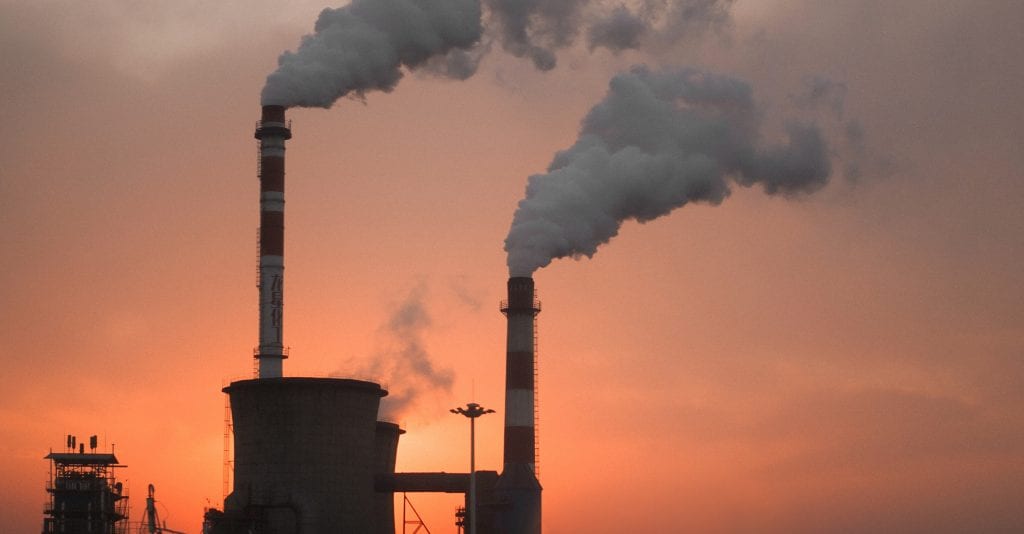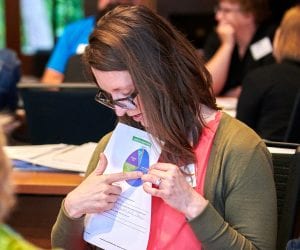The global community must manage an ever-growing amount of pollution as our population continues to grow by 80+ million people each year, much of it in urban areas. This waste is in the air, on land, and in the water, affecting the climate and our very own well-being. Preserving our environmental quality in the face of a more urbanized, affluent, and energy-dependent world is one of the largest challenges of the 21st century.

Pollution in the Air, Water and Land
Burning fossil fuels – whether from vehicles, factories, or power plants – results in various pollutants that cloud our air. Agricultural and industrial runoff sends harmful chemicals into waterways, making the water unfit for human consumption and toxic to marine ecosystems. In less developed countries, waterways are also fouled with trillions of gallons of untreated sewage. On land, the overuse of fertilizers in farming and hazardous chemicals in mining degrades and acidifies surrounding soils. Additionally, individuals’ trash, especially one-time use plastics, accumulates on both land and in the oceans.
Climate Change
Greenhouse gas pollution is the main driver of global climate change, a force that is disturbing the balance of the natural world. The burning of fossil fuels to meet energy demands and support other human activities releases vast amounts of carbon dioxide and other greenhouse gases into the atmosphere. These gases trap heat, leading to warmer temperatures, sea level rise, more extreme weather events, and ocean acidification. Droughts, floods, storms, and heat waves are forcing people from their homes and livelihoods. Land and water habitats are changing rapidly, making them a hostile environment for some native species and giving way to invasive species.
Human and Wildlife Health
Often as a result of sewage and industrial waste, 1.1 billion people lack clean water and 2.4 billion lack effective sanitation globally. Harmful particles from industrial and transportation emissions pollute the air and can damage people’s respiratory, immune, endocrine, reproductive, and nervous systems. But humans aren’t the only ones at risk and animals can suffer similar consequences. Furthermore, light and noise pollution can affect animal communication, navigation, and even prevents some species from feeding and breeding normally.
Ecosystem Destruction
In the water: Agricultural pesticides and other nutrients run-off into marine ecosystems, resulting in unfettered algae growth that depletes oxygen levels in the surrounding waters and may kill aquatic life in the area. Acidification from pollution and climate change can heat up ocean waters destroying coral reefs and threatening the entire marine ecosystems they support.
On the land: Soil acidification, caused by acid rain and chemicals from agriculture and waste, destroys the microbes that are crucial for soil health, which in turn affects plants and trees that form the base of working ecosystems.
Key species: Pollution is weakening and killing off key species that perform critical ecosystem services. Examples include bees and insects that are necessary for pollination, and whales that serve as nutrient shuttles. The loss of such species can result in cascading effects capable of destroying whole ecological networks.
It is important to realize that when waste – whether on land, in water or in the sky – is disposed of, it’s not really being thrown “away.” We are only displacing it from one area to another. For solid waste, source reduction might be the most environmentally sound and cost-effective long-tern solution. As for the air, development of cleaner fuels, strengthened fuel economy standards for motor vehicles, and a more efficient mix of transportation alternatives could all play a significant role. Water technologies and practices that promote efficiency, water quality, conservation, and ecosystem integrity would enhance the welfare of humans and the environment. As the global population increases, such systematic and cultural changes, along with individual lifestyle modifications, must become the norm.
Preventing pollution is one of the topics for the 2017-2018 World of 7 Billion student video contest. For more information on population and pollution, check out the contest background resources.
Image credits: Factory by Alexander Tsang on Unsplash



